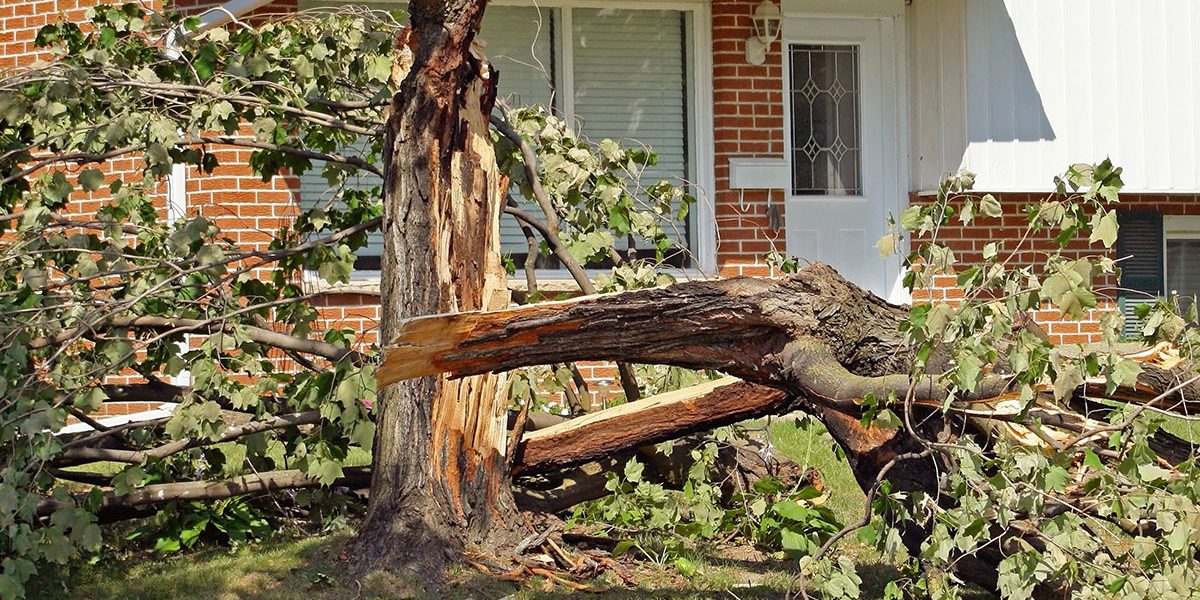South Carolinians are no strangers to strong storms that damage trees, turning beautiful scenery into a looming danger.
Understanding how to inspect and assess tree damage is essential for homeowners and property managers to ensure both safety and proper care of the affected trees, knowing when they can be saved and when they should be removed to eliminate the potential for damaging your home.
This quick guide will help you identify the different types of tree damage, common causes, and the signs to look for when inspecting your trees after a storm.
Inspecting And Assessing Storm Damaged Trees
Types Of Tree Damage
Damage to trees can generally be categorized into three levels of severity.
1. Mild Damage: Broken minor branches and loss of smaller limbs and patches of torn and shredded bark, but no significant loss of the tree’s main structure.
2. Moderate Damage: Loss of larger limbs, hanging branches posing a risk to nearby structures, and the possibility of serious compromise to structural integrity.
3. Severe Damage: Uprooted and fallen trees, trees leaning at dangerous angles and at risk of falling, large trunks and limbs fallen on cars and buildings.
Common Causes of Tree Damage
While storms are the major cause of sudden, serious tree damage, flooding can be just as destructive and even more so in certain areas. Other causes of tree damage that, although slower acting, can be just as harmful to individual trees include pests such as the emerald ash borer, dogwood borer, and laurel wilt; sudden changes in the immediate environment, both natural and manmade; and wildlife including wild boars and bears.
Visible Signs of Tree Damage
When inspecting your trees after a storm, or as part of a tree health evaluation, keep an eye out for these indicators of damage or disease.
1. General:
- Large dead or dying branches
- Detached or hanging branches
- Cavities or rotten wood on the trunk or branches
- Cracks in the trunk or major limbs
- Precariously leaning trees
- Fungi or mushrooms at the tree base
2. Bark Damage:
- Stripped or missing bark
- Teeth, claw, rubbing, and burrowing marks from wildlife
- Signs of insect infestation
3: Root Issues:
- Exposed or damaged roots
- Signs of digging and burrowing and compacted soil
4. Foliage Changes:
- Scorched or wilted leaves
- Leaves dropping or changing color out of season
- Noticeably thinning canopy
Assessing the Severity of Tree Damage
Here are things to do during a preliminary evaluation, but it’s always best to have a professional arborist evaluate your trees if you suspect damage.
- Evaluate Structural Integrity: Check if the main trunk is still mostly intact and if the tree has lost less than 50% of its branches.
- Assess Root System: Look for exposed or severed roots, as well as soil heaving around the base of the tree.
- Examine Crown Damage: Evaluate the damage to the tree’s canopy and major limbs.
- Consider Tree Species: Some species are more hardy and resilient to storm damage than others.
If a tree has damaged your roof, contact the professionals at Adams & Coe. We can handle all of your commercial or residential roofing needs, as well as renovation and remodeling in Upstate South Carolina.


